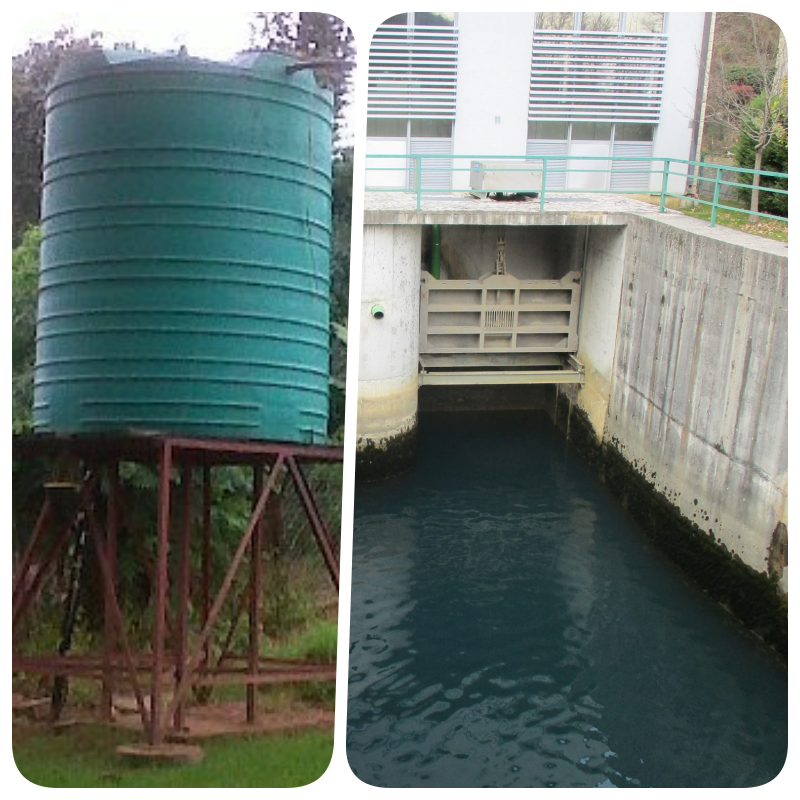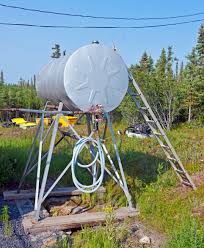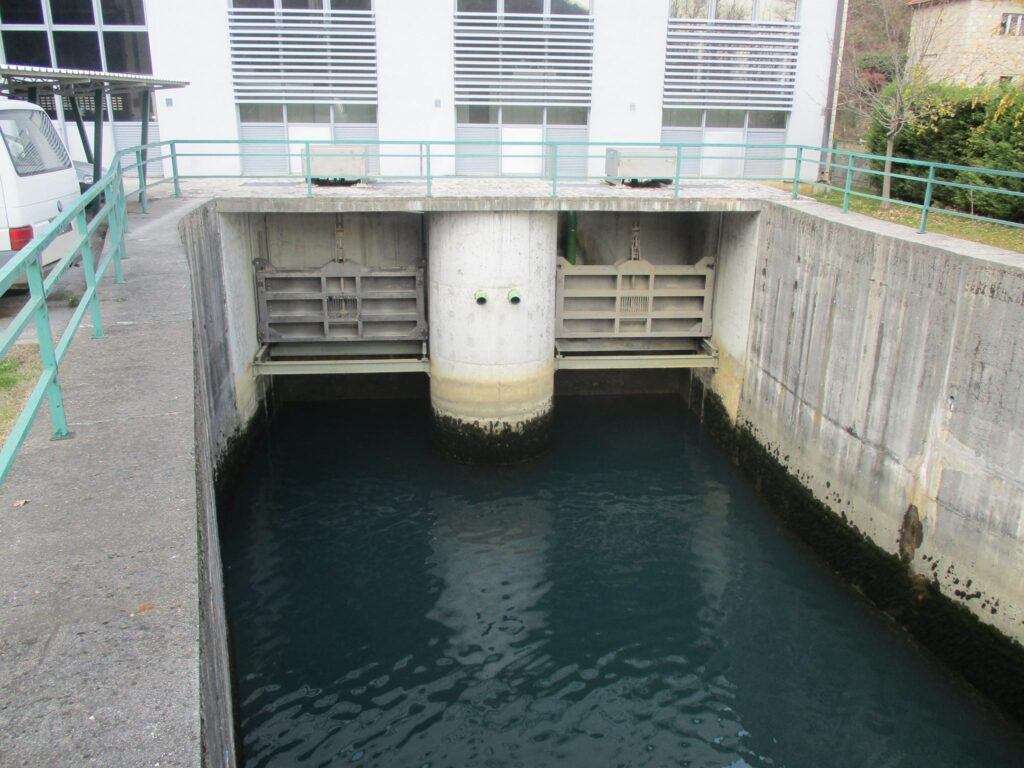
Storing water is essential for irrigation, drinking, and many other uses.
Choosing the right tank system for water storage can significantly impact efficiency and durability.
There are two main types of tanks: above-ground and underground.
In this post, I’ll explain each type and outline their differences to help you make the best choice.
Brief Understanding of Water Tank System
Before jumping on to compare their pros and cons, let’s clarify what water tank systems are and why they matter.
Water tanks are designed to store water for various purposes, including:
- Rainwater harvesting
- Backup water supply during shortages
- Irrigation for gardens and farms
- Fire suppression systems
- Industrial processes
These systems play a vital role in water management, conservation, and ensuring a consistent water supply for various applications.
Above Ground Water Tank System

As a name, it is the tank that is set above the ground. They sit above your property and are easily accessible.
These tanks are usually made from materials such as plastic, fiberglass, steel, or concrete.
Advantages of Above Ground Water Tank
There are several advantages of using the Above Ground Water Tank.
Cost-Effective
Above-the-ground tanks are easy to install and maintain. That’s why they’re affordable upfront compared to the underground.
Accessibility
Nowadays, as I mentioned above, tanks are easily accessible.
You can quickly identify and address any issues that may arise.
Visual Monitoring
It’s easy to visually inspect the tank’s condition and water levels, allowing for quick detection of leaks or damage.
Gravity Feed Systems: When placed at an elevated position, above-ground tanks can utilize gravity to distribute water, potentially reducing the need for pumps.
Versatility
Above ground tanks can be easily relocated if needed, offering flexibility in terms of placement and future property modifications.
Disadvantage of Above Ground System
Space Consumption
Above the ground tanks take up significant space on your property, which could be used for other purposes.
Aesthetic Concern
Not only take space off your property, but these tanks affect the look of your property. Ultimately leading to potentially affecting the aesthetics of your property.
Vulnerability to Damage
Above the ground, the tank is more exposed to potential damage from accidents, severe weather, or vandalism.
UV Exposure
Sunlight exposure can degrade certain tank materials over time, potentially shortening the lifespan of the system.
Temperature Fluctuation
Above ground tanks are exposed to temperature changes, which can affect water quality and promote algae growth.
Underground Water Tank System

Contrary to the above-ground tank, the underground tank is buried under the property.
These tanks are typically made of concrete, fiberglass, or high-density polyethylene (HDPE).
Advantages of Underground Water Tank System
Protection From Elements
Underground tanks are protected from UV rays, extreme weather conditions and other potential accidents and vandalism.
Longer Life Span
Compared to the above-ground tanks, underground tanks have longer life spans due to their protected location.
For the longer life span of the underground tanks, concrete is the best choice to build.
Large Capacity
For big irrigation purposes, underground tanks are the best choice.
It can often accommodate larger volumes of water without the space constraints that above-ground tanks face.
Space Saving
The best thing about the underground tank is invisibility, so you can use the land the water tank builds for other purposes, and also doesn’t impact the visual appeal of your property.
Temperature Stability
A stable temperature underground makes water at a more consistent temperature throughout the year.
This can help maintain water quality and reduce the risk of algae growth.
Reduce Evaporation
In hot and arid climates, the underground environment helps minimize water loss through evaporation, especially in hot climates.
Disadvantages of Underground Water Tank System
Higher Initial Cost
Setup and installation of underground tanks are more complex and labor-intensive, resulting in higher upfront costs.
Limited Accessibility
Due to the tank’s underground location, maintenance, repairs, and inspections are more challenging.
Structural Conservation
Underground tanks need to be designed to withstand soil pressure and potential ground shifting.
Potential For Contamination
If not properly sealed, underground tanks can be susceptible to contamination from groundwater or soil
Pumping Requirements
Most underground walking systems require pumps to distribute water, adding to operational costs and maintenance needs.
Okay, now that you have a clear idea of both tank systems, it’s time to compare them side by side.
Above Ground VS Underground Tank System
Maintenance and Longevity
Above Ground Tank
Regular Cleaning:
Above the ground tanks need at least annual cleaning to prevent sediment buildup and algae growth.
Winterization:
Not only cleaning; in colder climate areas, it is necessary to take steps to prevent freezing, such as insulating exposed pipes.
Inspection:
With regular inspection, it is easy to find signs of damage, leaks, or wear before it could hamper the tank.
UV Protection
For plastic tanks, consider using UV-resistant coatings or covers to extend their lifespan.
Underground Tank
Water Quality Testing:
To ensure no contamination accrued, conduct periodic water quality checks.
Professional Inspection:
For detail, checking and finding potential issues, schedule a regular professional inspections.
Pump Maintenance:
For regular usage of tanks, it is necessary to regularly service and maintain the pump system to ensure efficient operation.
Leak Detection:
Install and maintain leak detection systems to quickly identify any potential problems.
Cost Analysis
In the end, it all comes down to how much you have to bear to install one of the tanks.
Before I break down the cost analysis, do know that the cost is dependent on the material and size of the tank.
Above Ground Tanks
Above ground tanks can cost you $500 to $5000 on average for installation. As I stated, it could be more than what I’ve mentioned. For example, a 250-gallon steel tank can cost around $500, while a 50,000-gallon tank can cost $50,000 or more.
Not only installation Annual Maintenance: can cost $100 – $300 for over that lifespan of 15-30 years.
Underground Tank Cost
Initial installation could cost $5,000 – $25,000 (varies based on size and installation complexity) and Annual Maintenance $200 – $500 for over the lifespan of 20-40 years.
At first glance, it seems that above the ground tanks are cost-effective and have low maintenance. However, underground systems have higher upfront costs, and their longer lifespan and potentially lower maintenance needs over time can make them more cost-effective in the long run, depending on your specific circumstances.
Environment Consideration
While comparing ground and underground tanks, it’s also important to consider their environmental impact:
Above Ground Tank
Material Production:
The manufacturing process of materials like plastic or steel for above ground tanks can have a significant environmental footprint.
Energy Efficient:
Above the ground tanks are energy efficient if they use gravity for water distribution.
End-of-Life Disposal:
When an above ground tank reaches the end of its life, it may be easier to recycle or dispose of properly compared to underground tanks.
Underground Tank
Longevity:
The longer lifespan of underground tanks means less frequent replacement, potentially reducing long-term environmental impact.
Excavation Impact:
Installing the underground tank involves significant excavation, which can disrupt local ecosystems.
Water Conservation:
Underground systems typically result in less water loss through evaporation, contributing to better water conservation.
Last Words…
When choosing a water tank system, consider factors such as budget, property layout, local regulations, and personal preferences.
Above-ground tanks are affordable and easy to maintain but can be visually unappealing and vulnerable to environmental factors.
Underground tanks offer better temperature stability, longer lifespans, and save space but require higher initial investments and complex maintenance.
Implementing a water tank system is a step toward sustainable water management, benefiting both your property and the environment. Consulting with water management experts or tank installers can help tailor a solution to meet your specific needs.

Leave a Reply